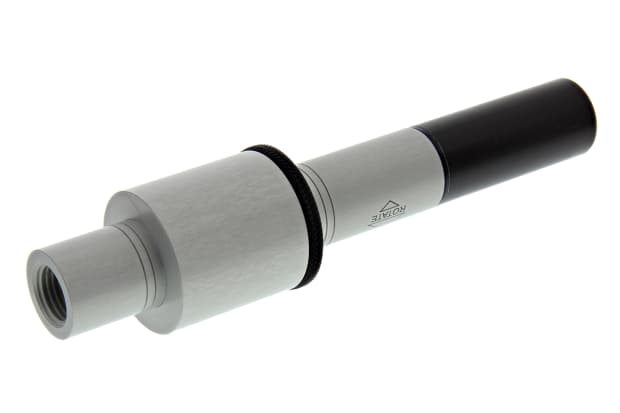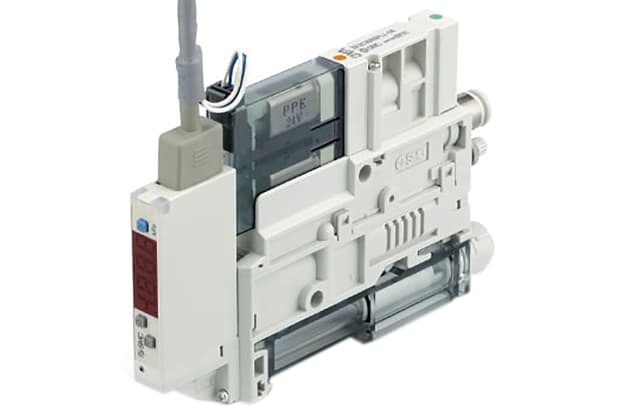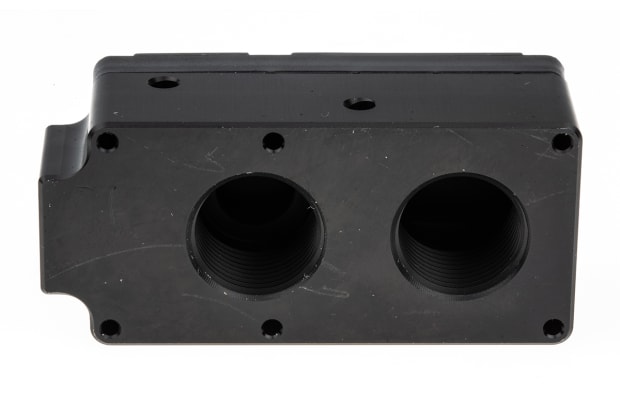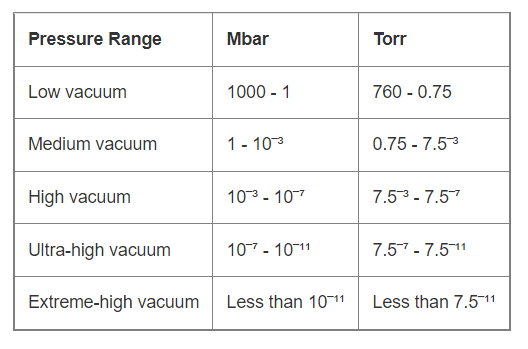- Published 8 Mar 2023
- Last Modified 27 Jun 2024
- 9 min
A Complete Guide to Vacuum Pumps
Curious about vacuum pumps? Our comprehensive guide provides all the essential information you need.

In this guide, we’ll explore what a vacuum pump is, how vacuum pumps work, their applications, and uses, and introduce various types of vacuum pumps to choose from in Hong Kong.
What is a Vacuum Pump?
Vacuum pumps, explained simply, are used to create vacuums. These powerful devices pull the gas and air molecules from sealed containers to create a vacuum (technically a ‘partial vacuum’ as it will be imperfect in comparison to a theoretical ideal - or ‘perfect’ vacuum). Such vacuums may be required for an engineering or manufacturing process or they may be used to move liquids from one location to another, just like conventional pumps.
Also known as suction pumps, they are hardworking devices and it is important to ensure they are properly maintained and replaced when necessary.
Vacuum Pump Working Principle
Vacuum Pump Working Principle
Although different types are available, the working principle and basic vacuum pump operation remain the same. Vacuum pumps operate on the cyclic volume removal principle, which is a process of expanding a small sealed cavity within the pump, effectively reducing its pressure below atmospheric levels. As a result, gas from the chamber being evacuated is pushed into the pump's small cavity. Once the pump's cavity is sealed off from the chamber, it is opened to the atmosphere and compressed back to a smaller size. This cyclic expansion and compression of the sealed cavity allow the pump to continuously draw gas out of the chamber, creating a vacuum effect.
Vacuum pump devices are designed to remove air or gas molecules from the vacuum chamber. However, as pressure reduces, molecules become increasingly more difficult to remove. Industrial vacuum pumps are able to overcome this as they are suitable for use over a large pressure range.
Vacuum Pump Types
Vacuum pumps can be classified as either dry (oil-less) or wet (oil-lubricated). This simply refers to whether the gas is exposed to a lubricant during the process of compression. Dry pumps are beneficial as they reduce the risk of contamination whereas wet pumps are advantageous due to their effective lubrication and sealing properties.
Various types are available, each best suited to differing applications. These include:
- Rotary vane
- Piston
- Liquid ring
- Side-channel
- Displacement pumps
However, the four main types of vacuum pump are:

Positive Displacement Vacuum Pumps
These models combine an expanding cavity at the intake point with a decreasing cavity at the discharge point. This allows for a steady, moderate flow of suction power. As a result, they are best suited to pumping operations which require a steady speed.

Momentum Transfer Vacuum Pumps
Also known as kinetic pumps, momentum transfer pumps feature a rotating component which propels air or gas from its inlet to its outlet. This creates a low-pressure region which is sealed by a powerful valve when it becomes a vacuum. Some models also use high-speed jets of fluid.
There are two types of momentum transfer pumps - centrifugal and regenerative. The former makes use of a centrifuge to propel fluids through the device. Meanwhile, regenerative pumps (also known as turbine or peripheral pumps) recirculate liquid in order to increase the pressure achieved. These are high-pressure vacuum pumps ideal for creating powerful vacuums.

Diaphragm Vacuum Pumps
These rely on a pair of mechanical diaphragms, which move backwards and forwards to increase and decrease pressure. Liquid backflow is prevented by a valve. Diaphragm pumps are noted for their high level of accuracy and are widely used in industrial environments.

Entrapment Vacuum Pumps
Entrapment pumps, also known as capture pumps or trapping pumps, are refrigerated devices that induce condensation of air molecules by cooling within a confined space. The resulting liquid is then removed. Some entrapment pumps - called ion pumps - use electrical fields to induce condensation. These are ideal for storing gas for later release.
Vacuum Pump Pressure Ranges
Industrial vacuum pumps are typically categorised by the pressure ranges they are designed to work with. Standard pressure ranges include:

Vacuum Pump Applications and Uses
The vacuum pump devices are indispensable across industries and serve important roles globally and in Hong Kong. Their uses span from food safety to advancing scientific research. The following are their common applications:
- Food and Beverage Industry: Used in food packaging to ensure food safety and prolong shelf life. Vacuum pump maintains pressure below atmospheric levels, creating a clean, oxygen-depleted environment to inhibit the growth of bacteria.
- Electronics Manufacturing: Crucial for producing high-quality electronic components through processes like degassing solutions, liquid aspiration, and extraction; vacuum pumps also maintain low-pressure environments for semiconductor processing.
- Textile Manufacturing: Used to extract dirt and dust from textiles, aiding in the cleaning and drying processes.
- Plastic Industry: Supports the production of high-quality plastic products through fusion, injection, moulding, and extrusion processes.
- Automotive and Transportation: Utilised in automotive engines to boost braking efficiency and fuel economy. In aerospace, vacuum pumps ensure the precision of gyroscopes in flight instrumentation and aid in composite moulding processes.
- Healthcare and Pharmaceuticals: In radiotherapy devices, vacuum technology is employed to stabilise and accurately target treatment areas, enhancing the effectiveness and safety of cancer treatments. Similarly, in the pharmaceutical sector, vacuum pumps are utilised for degassing and distilling processes, ensuring the quality and purity of products. Additionally, medical vacuum pumps support a wide range of applications, from surgical procedures to patient care.
- Chemical Industry: Helps in concentration, filtering, desiccation, and lyophilization processes, essential for various synthesis and concentration efforts.
- Oil and Gas Industry: Used to lower the boiling point of crude oil components in vacuum distillation units, enhancing the efficiency of the oil refining process and product quality.
- Energy and Power Generation: Essential in uranium enrichment processes, vacuum pumps create the precise low-pressure environments needed for separating uranium isotopes, a critical step in producing nuclear fuel for power generation.
- Consumer Goods and Appliances: Vacuum pumps manufacture electric lamps, facilitate air conditioning systems, and optimise dairy equipment. Their role ensures efficient operation, from enhancing the production of lighting equipment to maintaining HVAC systems and improving dairy processing,
- Science and Research: Enhances the functionality of electron microscopes, spectrometers analytical instruments and similar analytical equipment, crucial for scientific research and discovery.
How to Use a Vacuum Pump
These components are powerful and potentially dangerous. Potential risks include:
- Contaminated pump oil spillage due to incorrect handling
- Injury from accidental exposure to moving parts
- Electrical shocks due to faulty wiring
- Fire due to overheating or other malfunctions
- Toxic fumes due to inadequate ventilation
Safety should always be your number one priority. Key health and safety considerations include:
- Familiarise yourself prior to operation
- Monitor oil levels and be prepared to change the oil when necessary
- Safely dispose of any oil in the proper manner
- Never block or obstruct exhausts or pump outlets
- Wear appropriate PPE
- Do not operate pumps in areas of limited or no ventilation
- Use a ventilation cabinet whenever possible
- Ensure belt guards are in place
- Use a spill tray to catch any leakage if faults occur
- Ensure tubing is fully compatible with the pump and fit for use - replace it if necessary
- Check the surrounding area for any combustible materials
- Check switches and cabling for potential faults
You should also bear in mind some practical considerations:
- Pump size
- Intended application
- Pump type
- Performance requirements
Specific guidance for how to use vacuum pumps should be outlined in the manufacturer's instructions for your particular product. In addition, knowledge and understanding of the basic vacuum pump working principle and the properties of a vacuum will prove beneficial.
Popular Vacuum Pump Brands
It is important to select the best product for your requirements. One of the key considerations is the manufacturer, and you should bear in mind that some brands specialise in particular vacuum pump types. A comparison tool may help you learn which is best suited to your industry or application.
Click below to browse our extensive range offered by industry-leading manufacturers and popular brands.
A.E. Controls Ltd
Browse vacuum pumps from Air Engineering Controls Ltd, which are suitable for a wide range of different uses and applications.